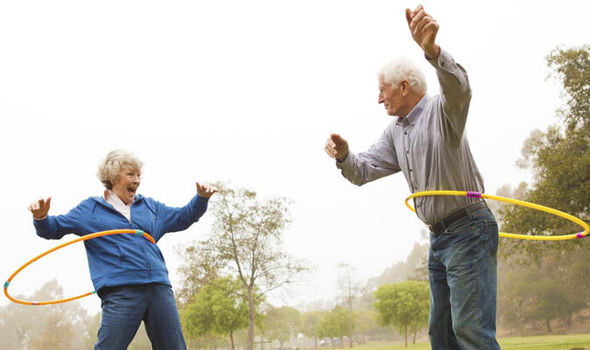
WHAT HELPS US LIVE LONGER?
There are seven noteworthy subcultures or communities where not only is the average lifespan significantly longer than in other parts of the world, but where more individuals live into old age than other places. Let’s see what they do right. We will focus on four.
Okinawa, Japan
Okinawa boasts the highest number of centenarians per capita in the world! Gardening, as a widespread and common activity, brings older citizens the benefits of sunshine, exercise, and nutritious plant-based foods. Okinawans adhere to a philosophy that promotes eating in moderation, and never gorging. They consume a lot of seaweed. They also have a sense of purpose, a positive outlook on life, and close social support groups, called moais.
Nicoya Peninsula, Costa Rica
The prevalent mindset in this population encourages a lifestyle that is physically active, with plenty of time in nature, as well as time spent on family and spirituality. They sleep eight hours. And their diet includes not only nutrient-rich local fruits, beans, rice and corn, but also water that’s naturally high in energy.
Ikaria, Greece
Home to mineral hot springs, Ikaria has been a health destination for decades. Its residents stay active through walking, farming, and boating, but they also take time out to nap and socialize. They supplement their Mediterranean diet with lots of wild greens and drink a local nutrient-rich herbal tea. The community as a whole encourages good health habits and promotes regular social engagement.
Loma Linda, California
Loma Linda is a community of 23,000 that includes about 9,000 Seventh-Day Adventists – a group that is significantly longer-lived than the average American. Adventist culture focuses on healthful habits, such as vegetarianism and excludes alcohol, caffeine, and smoking. Adventists drink plenty of water, exercise regularly, and maintain a healthy weight. They nurture emotional and spiritual health, value their family relationships, and prize volunteering.
Here are common common ingredients of these communities:
1. A cultural environment that reinforces healthy lifestyle habits, such as diet and exercise
2. Strong social networks
3. Lots of gardening.
4. A cooperative community spirit
5. Health (as well as medical) care easily accessed.
6. Seniors are valued as members of family and the community
7. Limited or zero consumption of refined sugar and other processed foods
8. Extremely low-stress lifestyles. (The American Medical Association has noted that stress is the primary cause of more than 60% of all human illness and disease.)
OK, those are some community and lifestyle factors in longevity. What about the personal, inner life traits or habits of people who live a long life?
The Longevity Project: Surprising Discoveries for Health and Long Life from the Landmark Eight-Decade Study, by Friedman and Martin, (Hudson Street Press, March 2011) provides some surprising findings:
1. The strongest predictor of long life was conscientiousness, which is synonymous with self-responsibility. Conscientious people are less likely to smoke, engage in risky behavior, and have accidents. They are more likely to focus on the big picture, and make good health choices moment to moment.
2. Avoiding stress alone doesn’t add up to longevity, but being engaged with meaningful work does. A sense of purpose far outweighs the absence of hassles. In fact, service to others ranked high in Friedman and Martin’s study – even greater than feeling loved by others!
3. Being part of something bigger than yourself: selfish people die younger than people who belong to a group or movement. That can be a church, religion, social cause or healthy lifestyle. People who volunteer for something live longer than those who don’t, but the “something” has to be selfless. (Science shows that people who volunteer only for their own personal satisfaction don’t live any longer than people who don’t volunteer at all.)
4. Humming and singing. Yes, humming and singing. The healthiest people in the world seem to intuit the value of oxygen, and regularly breathe deeply in some form or other. Rigorous daily exercise is one way; humming or singing, another.
5. Last, but not least, the authors found that people 100+ laugh a lot. Norman Cousins, author of Anatomy of an Illness, who cured himself of a serious autoimmune disease, through laughter (Marx Brothers films were his thing) believed that human emotions controlled the biology of our body, and led to health or sickness.
We have two items to add to these findings:
Express yourself! People who are in touch with and show their emotions tend to feel more connected with others and with life itself. They tend to feel more at home in their skin, and carry less tension overall. It’s the best way to stay mentally, physically and spiritually healthy.
Focus on and fill your world with beauty and gratitude.
Those are the strongest, most natural normalizers in life. They keep the heart open and the will to live strong. They deepen our sense of appreciation and heighten our sense of acceptance. They feed the most real part of us.
Isn’t it beautiful that the things that extend life also improve its quality, and that the things that improve the quality of life also extend it? The goal, after all, is not just more time, but feeling wonderful all of the time.

TAKE CONTROL OF YOUR HEALTH AND ESCAPE THE SICKNESS INDUSTRY
